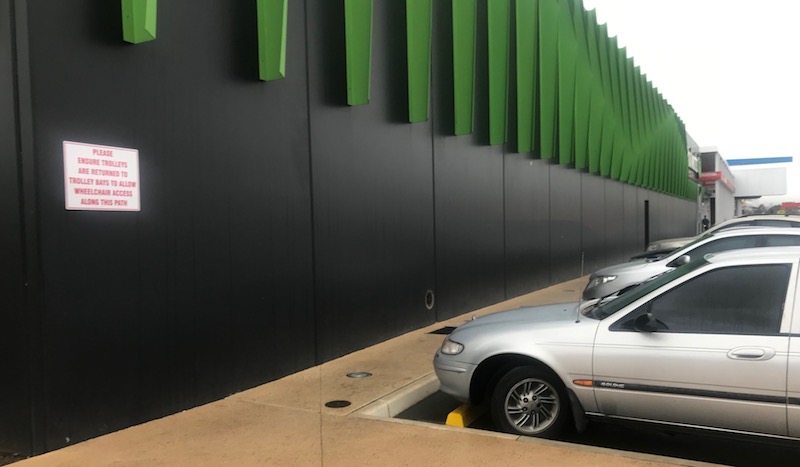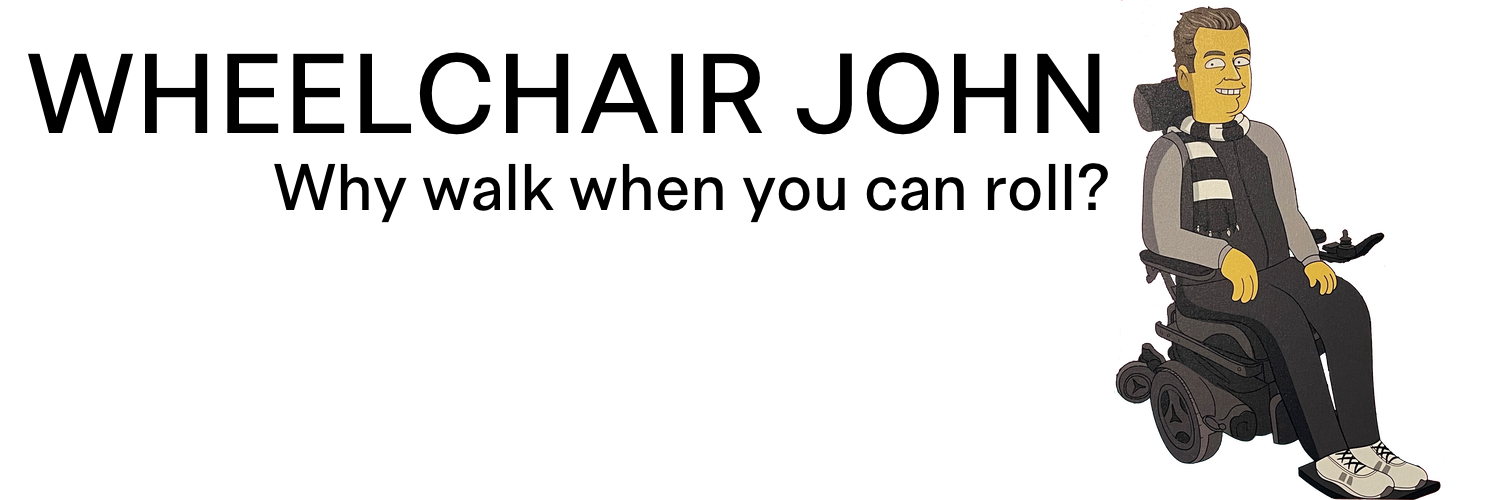Australian Human Rights Commission.
The Australian Human Rights Commission was established in 1986 by the Australian Government, and one of their roles is to ‘resolve complaints of discrimination or breaches of human rights under federal laws’. In 1992 the Commonwealth Disability Discrimination Act made it an offence to treat people unfairly because of a disability.
The Australian Human Rights Commission doesn’t make judgements, they attempt to resolve breaches of human rights via a procession called conciliation. They attempt to get the person making the complaint communicating with the organisation being complained about. Their website is located at https://www.humanrights.gov.au/
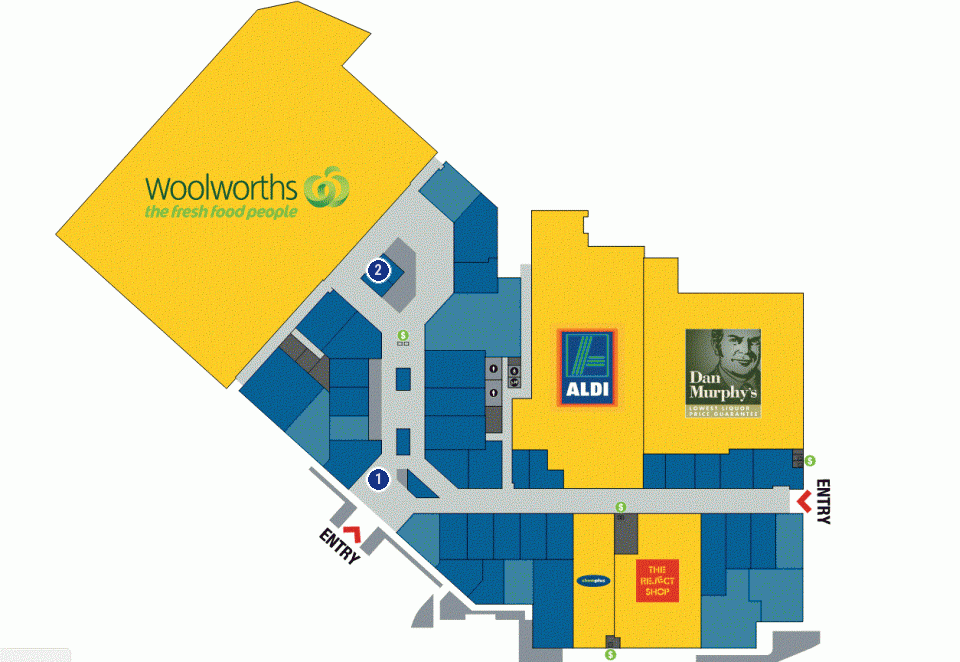
The Problem.
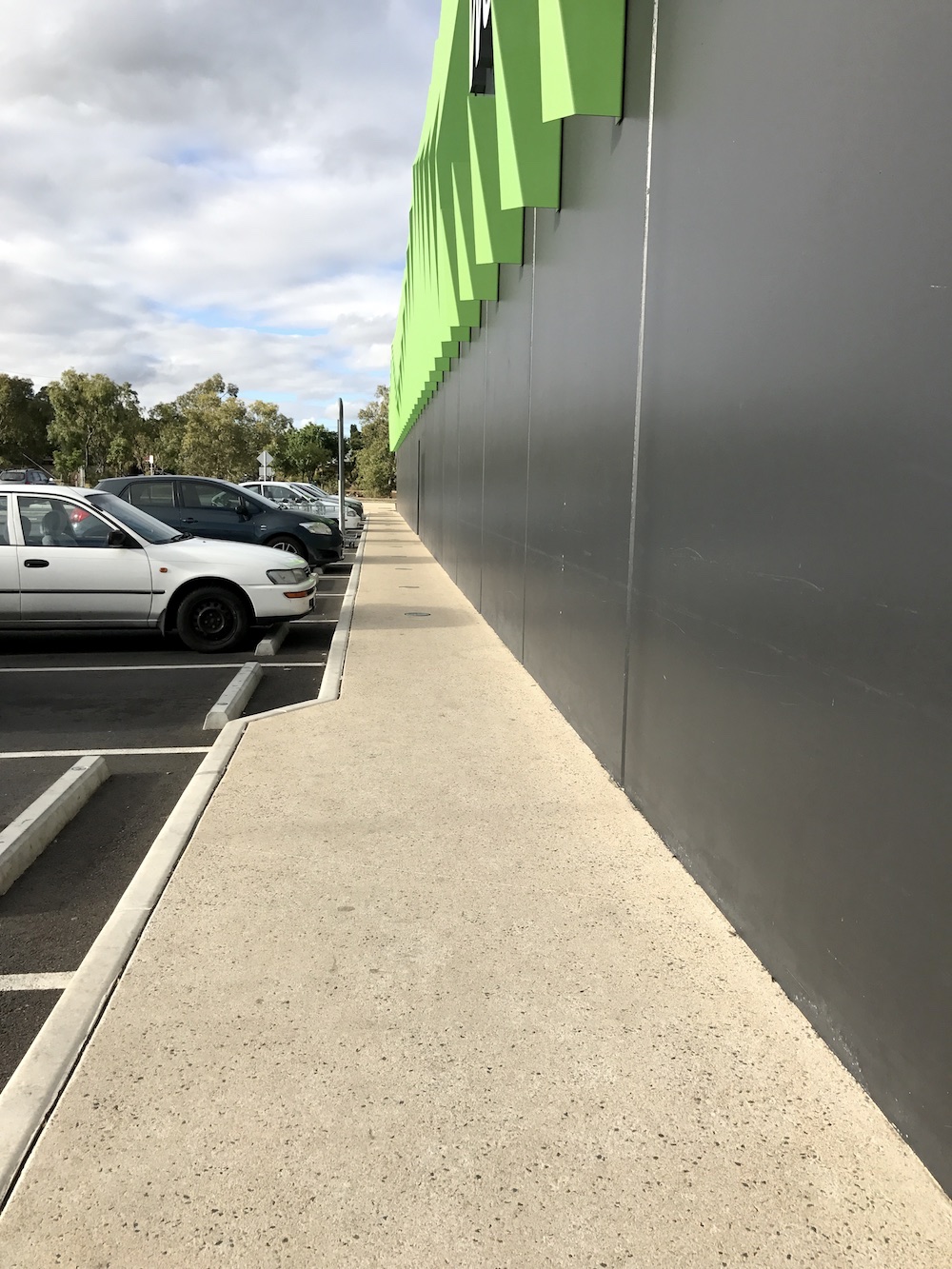
Gilles Plains is my local shopping centre, which was redeveloped recently. The centre is fairly well accessible, but there are two issues for wheelchair users.
A path, used by walkers and wheelies is too narrow when lazy and ignorant drivers leave their shopping trolleys in the way. In order to get past, I move the shopping trolley off the path and into
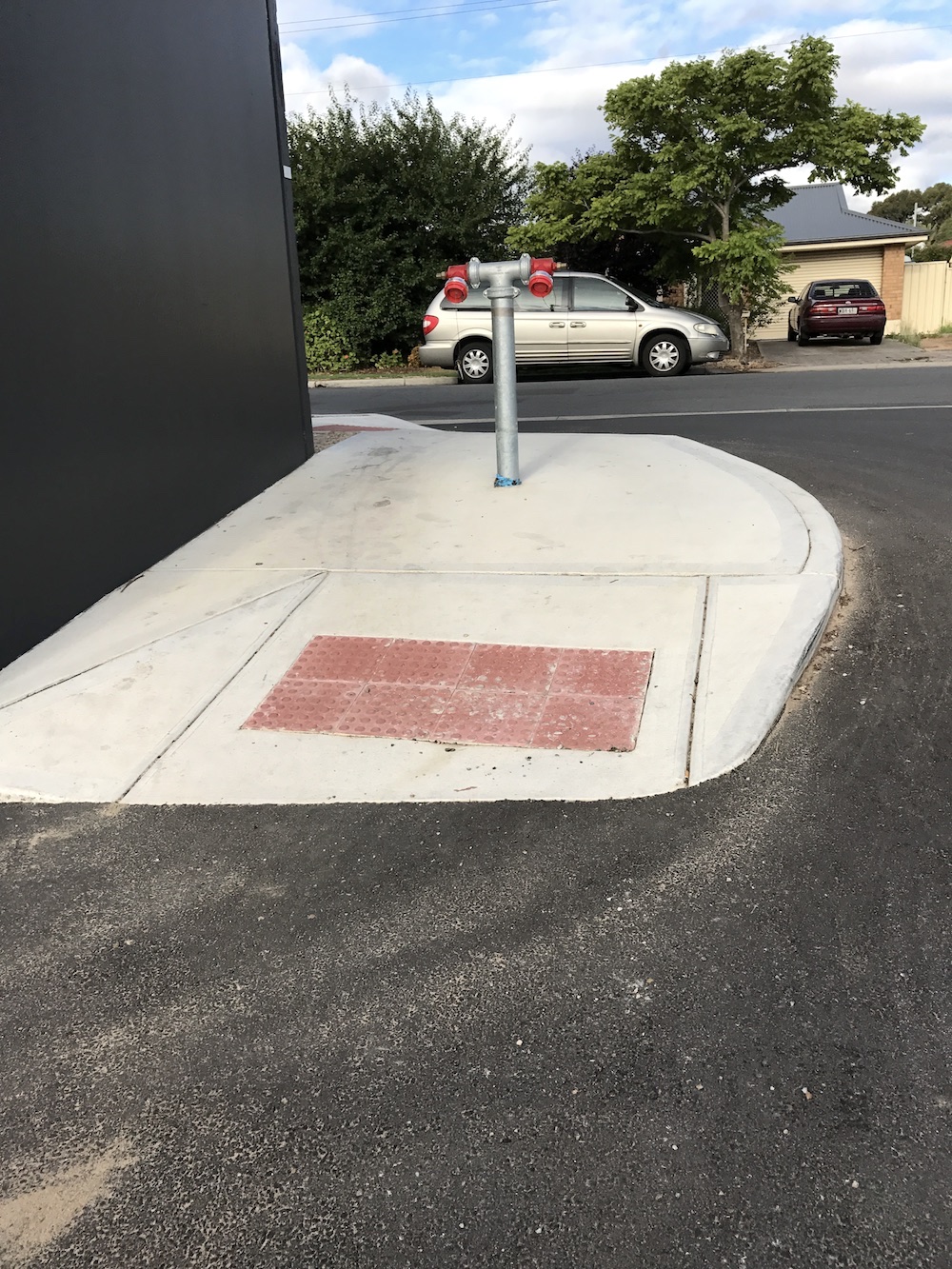
the car park area. This solves my problem, but a car is now unable to park there. Another solution would be for me to reverse direction, go back to the start, and use the car park instead. However, cars and wheelchairs don’t mix safely in shopping centre car parks.
The other issue was a path whereby wheelchairs could fall backwards, injuring the wheelchair user. Having a fire hose hydrant in the way wasn’t helping either. After trying the path once and almost falling backwards, I attempted going around the issue. There are times when the car park entry is too busy and not safe to use. An alternative was to turn left and roll through the truck delivery area, however, I think management wouldn’t want the public to go here, due to the presence of delivery trucks.
Making contact to share the problem.
I never contact the Australia Human Rights Commission without first trying to communicate with the organisation that is causing me a problem. I try to make contact a few times too.
A Google search quickly found that JLL is the company that manages the Gilles Plains Shopping Centre, and I sent an email to their reception. The email contained a compliment, the problem, and the two photos. And I kept the message short and to the point, and asked them to contact me for clarification.
Waiting and making contact again.
I could have included the date I would like to hear from JLL, but I think it is best to keep that out of the first form of contact. A few weeks should be sufficient for some sort of communication from the organisation. There are times I re-send the same information. Around four weeks had passed, and there are times I use social media (Twitter or Facebook) or a product review site (https://www.productreview.com.au/) to share the problem, and often it results in a quick response. It seems that some companies ignore private emails, but a public exposure does the trick. I decided to skip social media, and reported JLL to the Australian Human Rights Commission.
How to make a report to the Australian Human Rights Commission.
Their online complaint page is located here. The majority of the fields are identifying details. The important fields are the ‘What Happened’ and ‘How do you think the complaint could be resolved?’. The answers to both of these were already provided to JLL.
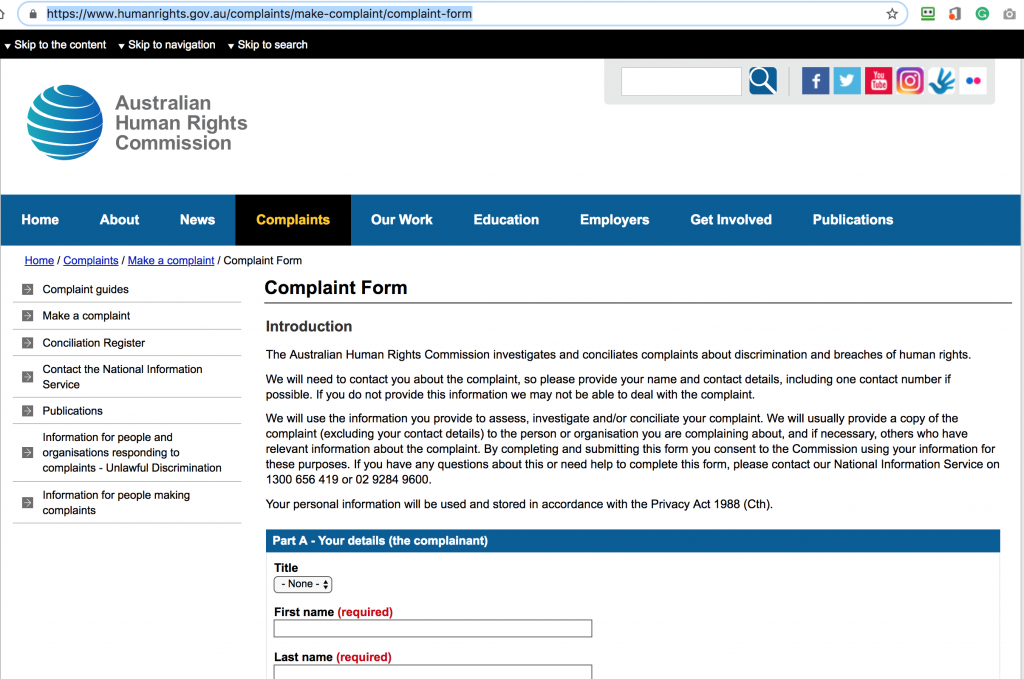
Due to the massive workload on the HRC, it took three months to get a reply. Katie, the HRC investigator, spoke to me over the phone, and advised via email that she had contacted JLL to share the complaint, the DDA, and asked for a response.
The agreement.
It took 15 months between the initial report and the finalisation of the complaint. JLL agreed to
- install ‘keep clear – no trolleys’ signs on the pathway.
- have the trolley tenants collect and monitor the area more frequently.
- further modifications to the centre to require approval by a suitable Occupational Therapist.
I would have preferred the two areas to be modified, However, I was pleased JLL was listening and trying to improve accessibility. The solution was acceptable for the first problem, but nothing was done for the second issue. I hope that no one falls backwards, and if they do, their lawyers can refer to this page, as the danger was reported and no action taken.
For another example of making a complaint to the Australian Human Rights Commission click here.
